Discover the Top Frontend Frameworks of 2024
- Published on

- Why Is Choosing the Right Frontend Framework Important?
- The Relationship Between Frontend Frameworks and User Experience
- Enhancing Website Speed to Improve SEO
- Frontend Development Trends in 2024
- Enhancing Performance
- Supporting Multi-Platform Development
- Integrating Artificial Intelligence (AI) and Machine Learning (ML)
- Frameworks Aligning with Trends
- Criteria for Evaluating a Good Frontend Framework
- Performance
- Ease of Use
- Ecosystem
- Scalability
- Compatibility with Modern Technologies
- Top Frontend Frameworks of 2024
- React – The Most Widely Used Frontend Framework
- Angular – The Ideal Choice for Large-Scale Applications
- Vue.js – A Flexible and Beginner-Friendly Framework
- Svelte – The Rising Star in Frontend Development
- Solid.js – Lightweight and High-Performance Framework
- Other Notable Frameworks
- Quick Comparison of the Top Frontend Frameworks
- Suggestions for Choosing the Right Framework for Your Project
- Large-Scale and Complex Projects
- Flexibility and Simplicity
- Optimizing Performance and Speed
- Multi-Platform Applications
- Stability for Long-Term Projects
- Future Trends in Frontend Frameworks
- Boosting Performance
- Enhanced Multi-Platform Support
- Integrating Artificial Intelligence and Machine Learning
- Focusing on Developer Experience (DX)
- Security and Sustainability
- Choosing a Framework That Stands the Test of Time
- Conclusion
- Which Framework Is the Best Fit for Your Project?
As we step into 2024, the frontend development landscape continues to dominate with a surge of new technologies and tools. Choosing the right frontend framework not only accelerates development but also ensures performance, user experience (UX), and search engine optimization (SEO). In this article, we summarize the best frontend frameworks of 2024, helping you understand their pros and cons to pick the optimal solution for your projects.
Why Is Choosing the Right Frontend Framework Important?
A frontend framework is not just a tool for developers to create user interfaces but also a decisive factor in:
- Product Development Speed: Robust frameworks reduce development time by offering pre-built libraries and support tools.
- Application Performance: Optimizing loading speed and minimizing resource usage.
- Scalability: Supporting long-term development needs and simplifying maintenance.
- SEO Optimization: Frameworks like React or Vue.js integrate well with Server-Side Rendering (SSR) for better visibility on search engines.
For example, if you’re working on an application that demands flexibility and high performance, opting for React or Svelte would be a strategic move.

The Relationship Between Frontend Frameworks and User Experience
A good frontend framework doesn’t just impact performance—it serves as the foundation for delivering an outstanding user experience. This is particularly critical in the context of Core Web Vitals, Google’s metrics for website performance, which are increasingly prioritized in SEO rankings.
Enhancing Website Speed to Improve SEO
Key metrics include:
- Largest Contentful Paint (LCP): Measures loading time for the main content of a page.
- First Input Delay (FID): Tracks response time after user interaction.
- Cumulative Layout Shift (CLS): Evaluates interface stability during display.
These metrics are closely tied to how well a frontend framework is optimized. Frameworks like Svelte and Solid.js are often highly rated for their exceptional performance.
You can explore more about website speed optimization or refer to official documentation for specific frameworks like React and Vue.js.
Frontend Development Trends in 2024
The year 2024 promises new strides in the frontend development domain with prominent trends such as:
Enhancing Performance
Performance remains the top priority when selecting a frontend framework. Tools like Svelte and Solid.js are gaining traction for their innovative approaches, eliminating the traditional Virtual DOM dependency. This speeds up processing and enhances loading times, especially on low-spec devices.
Example: An e-commerce application using Svelte can reduce page load times to under one second, improving conversion rates and lowering bounce rates.
Supporting Multi-Platform Development
More businesses are demanding applications that perform well across web, mobile, and desktop. Frameworks supporting Progressive Web Apps (PWA) like React paired with Next.js, or hybrid solutions like Ionic and Quasar, are becoming ideal choices.
Refer to our PWA optimization guide to learn more about applying this technology to your project.
Integrating Artificial Intelligence (AI) and Machine Learning (ML)
With the advancement of AI and ML, modern frontend frameworks need better integration to handle real-time data processing and deliver personalized user experiences. Tools like TensorFlow.js and PyTorch.js are extending frameworks’ capabilities to build smarter applications.

Frameworks Aligning with Trends
- React: Ideal for applications requiring Server-Side Rendering and high scalability.
- Svelte: Perfect for high-performance projects focused on user experience.
- Angular: Comprehensive tools for building large-scale, multi-platform applications.
- Vue.js: Flexible and easy to integrate with small to medium-sized projects.
When choosing a framework, don’t forget to consider the specific requirements of your project and the trends you want to follow.
Explore more about React and SEO optimization.
Criteria for Evaluating a Good Frontend Framework
Before diving into the list of the best frontend frameworks of 2024, it’s essential to understand the evaluation criteria. A good frontend framework should meet the following factors:
Performance
Performance is always a top priority. A frontend framework must ensure:
- Fast loading speeds via optimized source code.
- Smooth processing even on low-spec devices.
- Excellent support for Core Web Vitals metrics like Largest Contentful Paint (LCP) and Cumulative Layout Shift (CLS).
For instance, Svelte is among the frameworks excelling in performance by not relying on Virtual DOM, whereas React offers optimization solutions with Server-Side Rendering (SSR) via Next.js.
Ease of Use
An ideal framework should have:
- User-friendly API: Intuitive structure and clear documentation.
- Quick learning curve suitable for both beginners and experienced developers.
- A powerful CLI (Command-Line Interface) to automate tasks.
Example: Vue.js is renowned for its beginner-friendly structure and extensive documentation, making it suitable for small and medium-sized projects.
Ecosystem
The ecosystem includes libraries, plugins, and supporting tools built around the framework. A robust ecosystem not only accelerates development but also ensures project flexibility. Key factors include:
- Community Support: Does the framework have extensive support from the developer community?
- Libraries and Plugins: Are there abundant tools to extend functionalities?
- Official Documentation: Is the documentation detailed and easy to follow?
React and Angular are prime examples with robust ecosystems and vast communities. React, in particular, pairs well with numerous libraries like Redux, React Router, and Formik.
Scalability
A frontend framework must be powerful enough to handle large, complex projects while being easy to scale when needed. This is especially crucial for enterprise applications that require frequent updates.
Angular is often chosen for large-scale projects due to its strong MVC (Model-View-Controller) structure and built-in RxJS for state management.
Compatibility with Modern Technologies
In today’s fast-evolving tech landscape, a framework must support:
- TypeScript: Static typing for clearer, maintainable code.
- Progressive Web Apps (PWA): Optimizing cross-platform experiences.
- SEO Integration: Enhancing search engine rankings.
If SEO is a priority, Next.js (built on React) or Nuxt.js (built on Vue.js) are top picks for their Server-Side Rendering capabilities and performance optimizations.
When evaluating frameworks, always consider the specific needs of your project and your priorities in terms of performance, usability, or scalability. To explore how to choose the right tools, check out our article Guide to Website SEO Optimization.
Top Frontend Frameworks of 2024
Now that we’ve covered the evaluation criteria, let’s dive into the best frontend frameworks of 2024. This list is based on performance, features, popularity, and current trends.
React – The Most Widely Used Frontend Framework
React, developed by Meta (Facebook), remains at the top of the list of popular frontend frameworks in 2024. With strong community support and a massive ecosystem, React is an ideal choice for projects of all sizes.
Pros
- Virtual DOM: Enhances performance by efficiently updating the UI.
- SEO-friendly: Works well with Server-Side Rendering (SSR) via Next.js.
- Strong ecosystem: Includes diverse libraries and tools like Redux, React Router, and Formik.
- Large community: Easy to find resources, guides, and solutions for technical issues.
Cons
- Requires additional libraries to build a complete application (e.g., Redux, Router).
- Steeper learning curve for beginners.
Real-World Applications
React is used by major companies such as Netflix, Airbnb, and Uber, proving its flexibility and scalability.
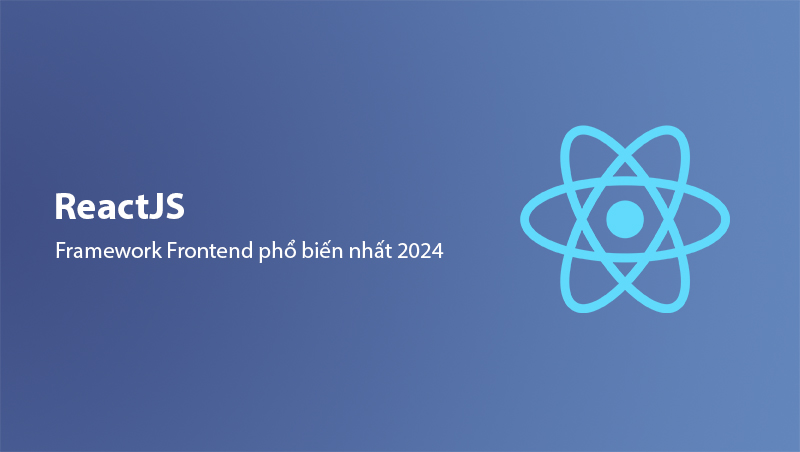
To learn more about React, you can refer to the article What is React? Essential Knowledge You Need to Master ReactJS.
Angular – The Ideal Choice for Large-Scale Applications
Angular, developed by Google, is a comprehensive frontend framework with robust built-in tools, making it suitable for large-scale enterprise projects.
Pros
- Full-Stack Solution: Integrated with RxJS and Angular CLI, speeding up development.
- TypeScript Built-In: Default TypeScript support ensures clear, maintainable code.
- Strong Google Support: Guarantees stability and regular updates.
Cons
- Steeper learning curve compared to other frameworks.
- May be overkill for small projects.
Real-World Applications
Angular is widely used by organizations such as Microsoft Office, Gmail, and various internal tools at Google.
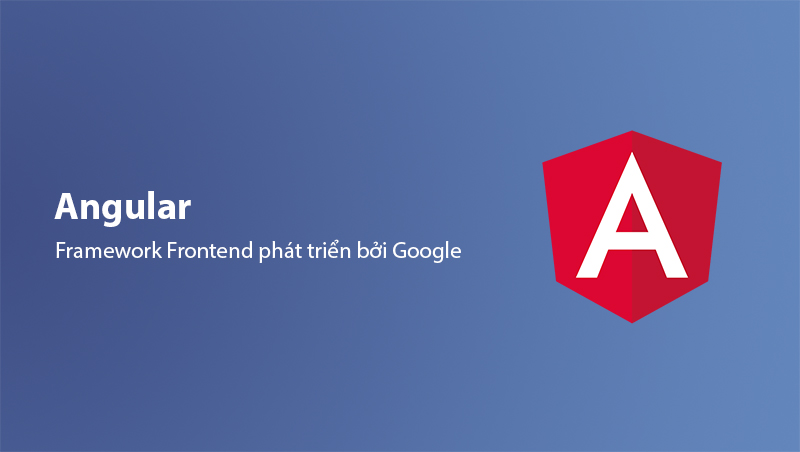
Explore more about what is Angular? to understand why this framework is so powerful.
Vue.js – A Flexible and Beginner-Friendly Framework
Vue.js, created by Evan You, is popular for its balance between power and simplicity. It’s an excellent choice for small and medium-sized projects or when you need a quick, straightforward solution.
Pros
- Beginner-Friendly: Simple structure and extensive documentation.
- Flexible: Suitable for both Single Page Applications (SPA) and smaller projects.
- Good Performance: Lightweight and fast.
Cons
- Smaller ecosystem compared to React and Angular.
- Not ideal for complex, large-scale applications.
Real-World Applications
Vue.js is used by companies like Alibaba, Xiaomi, and 9GAG.
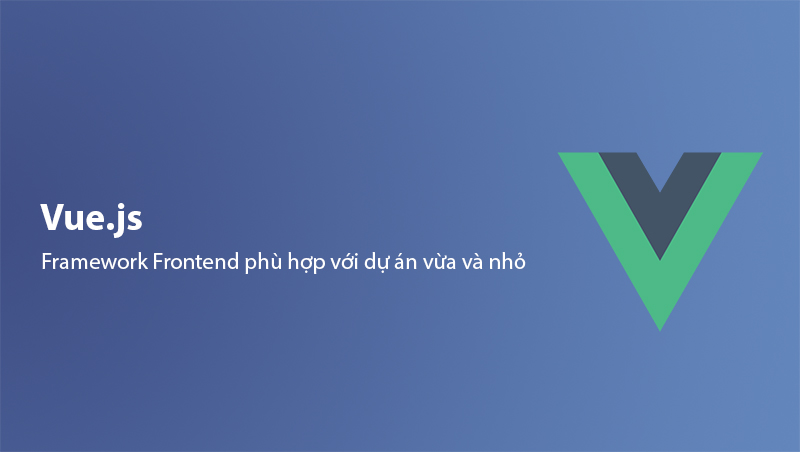
If you’re just starting, check out our article Vue.js and How to Use VueJS for Frontend Development.
Svelte – The Rising Star in Frontend Development
Svelte is a modern framework that takes a unique approach by compiling code directly into efficient JavaScript, eliminating the need for a Virtual DOM and boosting performance.
Pros
- Maximum Performance: Avoids Virtual DOM, reducing browser load.
- Compact Codebase: Generates lightweight, fast applications.
- Easy to Learn: Simple API, suitable for beginners.
Cons
- Smaller ecosystem with fewer resources compared to React or Angular.
- Limited community support due to its relatively new status.
Real-World Applications
Svelte has been adopted by The New York Times and other projects emphasizing high user experience.
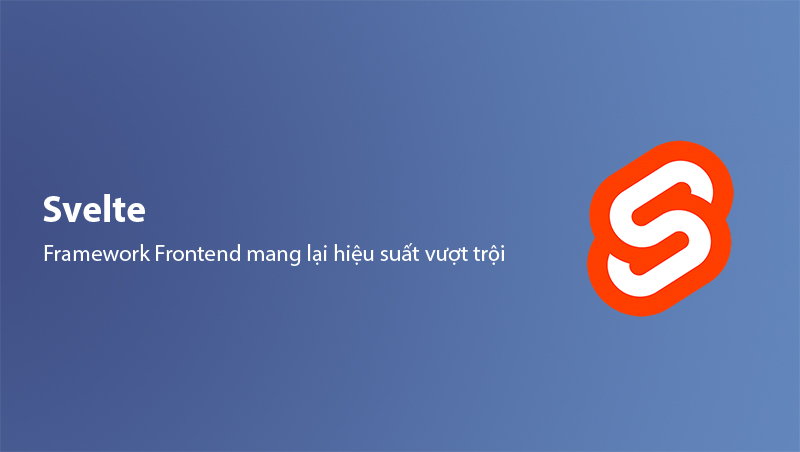
Solid.js – Lightweight and High-Performance Framework
A newcomer to the scene, Solid.js is capturing attention for its exceptional performance and modern approach to UI development. It combines React’s reactive nature with Svelte’s performance efficiency.
Pros
- High Performance: Uses reactive primitives instead of Virtual DOM.
- Lightweight: Perfect for applications needing maximum speed.
- Familiar Syntax: Easy transition for React developers.
Cons
- Smaller ecosystem with limited plugins and tools.
- Fewer resources for beginners.
Real-World Applications
Solid.js works well for small-scale, high-performance projects like landing pages or real-time applications.
Other Notable Frameworks
Apart from the top contenders, some frameworks excel in specific use cases:
- Ember.js: A mature framework designed for stable application development with powerful routing.
- Lit: Ideal for building Web Components for lightweight, efficient UI development.
- Alpine.js: A minimalist framework for simple applications or single features.
Quick Comparison of the Top Frontend Frameworks
The table below provides an overview of the key differences between the leading frameworks:
| Framework | Performance | Ecosystem | Ease of Learning | Flexibility | Real-World Applications |
|---|---|---|---|---|---|
| React | High | Very Large | Medium | Versatile | Netflix, Airbnb, Uber |
| Angular | Medium | Large | Difficult | Large-Scale | Microsoft Office, Gmail |
| Vue.js | High | Medium | Easy | Flexible | Alibaba, Xiaomi, 9GAG |
| Svelte | Very High | Small | Easy | High Performance | The New York Times |
| Solid.js | Very High | Small | Medium | Lightweight | Landing pages, realtime apps |
Suggestions for Choosing the Right Framework for Your Project
Selecting the right frontend framework is not always straightforward, especially since each framework has its own strengths and weaknesses. Here are some tips to help you make an informed decision based on your project goals and requirements:
Large-Scale and Complex Projects
For complex, large-scale projects, such as enterprise management systems or multi-feature applications, Angular is an ideal choice. Its MVC architecture, built-in RxJS, and TypeScript support make managing large modules and minimizing errors easier.
- Example: Building an internal data management system for a large corporation.
Flexibility and Simplicity
When you need a framework that’s easy to learn, flexible, and fits a variety of projects, Vue.js is a standout option. Its simplicity enables quick adoption while ensuring excellent performance for both Single Page Applications (SPA) and smaller applications.
- Example: Designing a simple order management dashboard for small e-commerce stores.
Optimizing Performance and Speed
For projects demanding maximum performance and speed, Svelte or Solid.js are the best options. Svelte is ideal for creating smooth, lightweight applications, while Solid.js offers a perfect blend of performance and modern programming features.
- Example: Creating a high-speed landing page for marketing campaigns.
Multi-Platform Applications
If your project requires a solution that works seamlessly across web and mobile platforms, React is the go-to choice. With React Native, you can reuse most of your frontend code to develop mobile apps, saving both time and resources.
- Example: Developing a mobile app for a hotel booking startup.
Read more in React Native: A Cross-Platform Solution.
Stability for Long-Term Projects
For projects prioritizing long-term stability, frameworks like Angular or Ember.js are worth considering. Angular’s backing by Google ensures consistent updates, while Ember.js offers robust stability due to its tightly controlled development process.
- Example: Building a long-term booking system for a travel agency.
Future Trends in Frontend Frameworks
As technology continues to evolve, frontend frameworks are adapting to meet new demands from developers, businesses, and end-users. Below are some trends shaping the future of frontend development:
Boosting Performance
Performance remains a top priority. Frameworks like Svelte and Solid.js are paving the way by:
- Reducing bundle size: Minimizing unused code to improve page load speeds.
- Advanced UI handling: Moving away from Virtual DOM for smoother rendering.
- Integrated Core Web Vitals: Automatically measuring and optimizing metrics like LCP, FID, and CLS to meet Google’s performance standards.
Real-World Example
Solid.js leads the trend with its lightweight nature and instant UI updates, making it ideal for performance-critical applications.
Enhanced Multi-Platform Support
With the rise of Progressive Web Apps (PWA), frameworks are increasingly focused on providing seamless multi-platform solutions. Frameworks like React (with React Native) or Vue.js (with Quasar) allow developers to create web and mobile applications using a single codebase.
Key Focus Areas
- Built-in PWA tools: Ensuring web apps function like native apps on mobile.
- Code synchronization: Sharing a single codebase across platforms to reduce development costs.
Real-World Example
Instagram uses React Native to deliver a smooth experience across web and mobile devices.
Integrating Artificial Intelligence and Machine Learning
AI and ML are becoming integral to modern applications. Frontend frameworks are evolving to integrate tools like TensorFlow.js and PyTorch.js, enabling:
- Personalized user experiences: Recommending content or products based on user behavior.
- On-the-fly data processing: Reducing latency by handling data directly on the frontend.
Real-World Example
E-commerce apps can leverage frameworks like Vue.js or React to provide real-time product recommendations, boosting conversion rates.
Focusing on Developer Experience (DX)
A great framework not only needs to be powerful but also enjoyable for developers to use. Future frameworks will focus on:
- Powerful CLI tools: Simplifying project setup and configuration.
- Improved TypeScript support: Making codebases clearer and more maintainable.
- Rich documentation: Setting a high standard, as seen with frameworks like Angular and Vue.js.
Real-World Example
Vue.js 3, with its Composition API and TypeScript integration, has improved modern development workflows and usability.
Security and Sustainability
Security is becoming a critical concern for web applications. Frameworks are focusing on:
- Built-in security features: Preventing vulnerabilities like XSS (Cross-Site Scripting) and CSRF (Cross-Site Request Forgery).
- Long-term support: Frameworks like Angular ensure stability and frequent updates, backed by Google.
Choosing a Framework That Stands the Test of Time
Selecting the right frontend framework requires evaluating not only your immediate needs but also the potential for future growth and maintenance. By aligning with these trends, frameworks are equipping developers to build robust and scalable applications.
Conclusion
Choosing a suitable frontend framework is a critical decision that directly impacts application performance, scalability, and user experience. From long-established frameworks like React, Angular, and Vue.js to rising stars like Svelte and Solid.js, each framework offers unique strengths tailored to specific project needs.
Which Framework Is the Best Fit for Your Project?
- React: Ideal for flexibility, scalability, and a vast ecosystem.
- Angular: Best for large, complex projects requiring long-term stability.
- Vue.js: Perfect for beginners or small-to-medium projects with a focus on simplicity.
- Svelte & Solid.js: Optimal for performance-centric, fast-loading applications.
- Ember.js & Lit: Excellent choices for stable, long-term, or Web Component-focused projects.
Frontend frameworks are the cornerstone of modern web development. Take the time to research and experiment with different tools to make the best choice for your project’s objectives. Good luck with your development journey!
Latest Posts

Lesson 26. How to Use break, continue, and return in Java | Learn Java Basics
A guide on how to use break, continue, and return statements in Java to control loops and program execution flow effectively.

Lesson 25. The do-while Loop in Java | Learn Basic Java
A detailed guide on the do-while loop in Java, including syntax, usage, examples, and comparison with the while loop.

Lesson 24. How to Convert Decimal to Binary in Java | Learn Basic Java
A guide on how to convert numbers from the decimal system to the binary system in Java using different methods, with illustrative examples.

Lesson 23. How to Use the While Loop in Java | Learn Java Basics
Learn how to use the while loop in Java with syntax, real-world examples, and practical applications in Java programming.
Related Posts
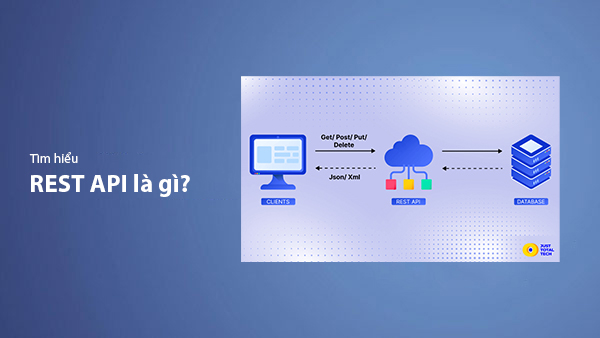
What is REST API? Complete A-Z Knowledge About REST API
REST API is one of the essential concepts that every backend developer needs to fully understand. This article provides comprehensive knowledge about REST API, including its definition, principles of operation, and how to build a standard RESTful API.
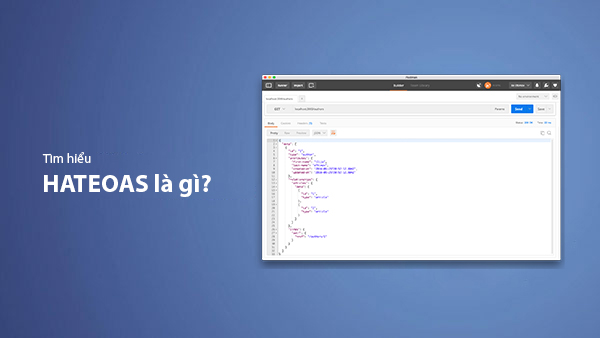
What is HATEOAS? How to Build APIs Using HATEOAS
Learn about HATEOAS, an important concept in API development, and how to build APIs using HATEOAS to improve interactivity and scalability.

What Is GraphQL? The Advantages of GraphQL Over REST API
Explore GraphQL, a modern API technology, and why it outperforms REST API in many web development scenarios.
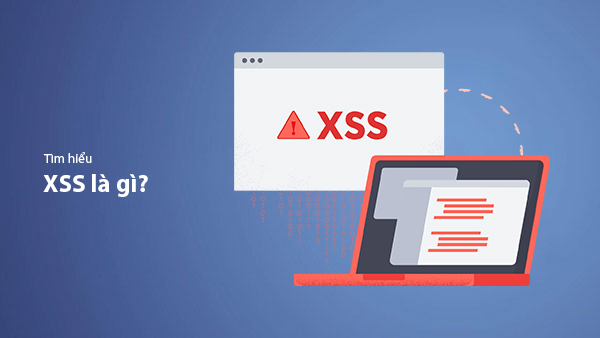
What is XSS? Signs of Detection and Effective Prevention Methods
Learn about XSS, signs of detection, and effective prevention methods for XSS attacks in websites.

